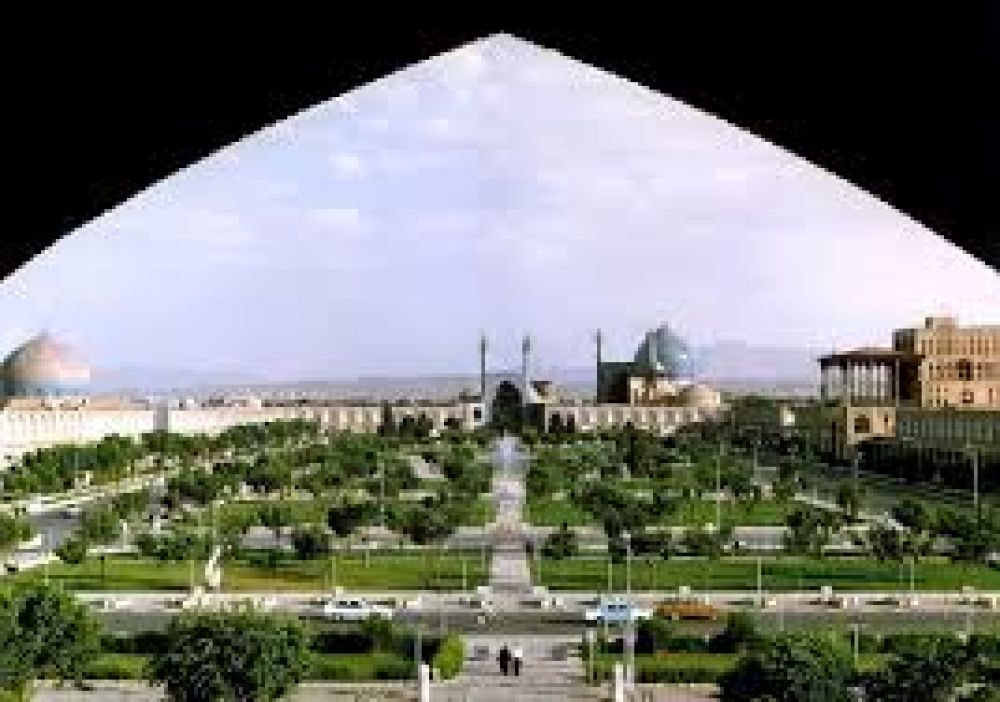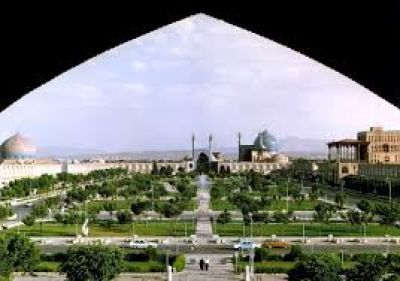

Shah Mosque, also known as Imam Mosque, is an exquisite example of Islamic architecture and a UNESCO World Heritage Site situated at the southern end of Naqshe Jahan Square. This architectural masterpiece, with its stunning tile work and grand domes, was completed in the 17th century during the Safavid era. Visitors to Shah Mosque can expect to be mesmerized by the beauty of its intricate designs and the acoustic properties of the central dome. The mosque features a vast courtyard surrounded by arcades and the minarets offer panoramic views of the square. Exploring this mosque not only offers a glimpse into the religious and historical significance of the site but also provides an opportunity to understand the aesthetics of Persian Islamic architecture. Photography enthusiasts will find the play of light and shadow, especially in the morning or late afternoon, to be particularly compelling.
Ali Qapu Palace is a grand palatial complex that stands imposingly on the western side of Naqshe Jahan Square. It was originally designed as a vast portal entrance to the royal palaces that lay beyond, and evolved into a residence for Safavid kings. The structure spans six floors, each serving a distinct function, and culminating in the renowned Music Hall on the uppermost level, embellished with intricate stucco work that was created to enhance the acoustics. A tour of Ali Qapu Palace includes a walk through regal rooms and stunning balconies that offer sweeping views of the square. The palace is also known for its elaborate ceiling paintings and fine miniatures, which reflect the pinnacle of Persian art during the Safavid era. Visitors will find themselves transported back in time as they wander through the echoing halls of this monumental palace.
The Bazaar of Isfahan, also known as the Qeysarie Bazaar, is located on the northern edge of Naqshe Jahan Square and seamlessly blends into the fabric of the city's daily life. This historic market is a labyrinthine network of alleys and corridors, sprawled over several kilometers, hosting merchants who sell everything from spices, traditional Persian rugs, handicrafts, to exquisite jewelry and intricate metalwork. As you saunter through the bazaar, the sounds of coppersmiths hammering, the aroma of spices, and the vibrant array of products provide a full sensory experience. The activity includes opportunities to interact with local artisans, see live demonstrations of traditional crafts, and savor local delicacies. It's also the perfect place for finding unique souvenirs and gifts. Besides shopping, the bazaar's ancient caravanserais and mosques add a historical and architectural allure to the visit.
Sheikh Lotfollah Mosque is renowned for its exceptional beauty and exquisite tiling. Built during the early 17th century, it was designed as a private mosque for the royal court, which is reflected in its size and the absence of minarets. The mosque is situated on the eastern side of Naqshe Jahan Square and is distinguished by its serene atmosphere, as well as its iconic dome that changes color from dawn to dusk. Visitors are often spellbound by the intricate details of the mosaic work and calligraphy that adorn the interior walls and ceiling. The mosque offers a quiet respite from the bustling square, inviting contemplation and appreciation of the artistry involved in its creation. The understated entrance belies the grandeur within, making the discovery of the inner chamber all the more delightful.
Chehel Sotoun Palace, also known as the 'Palace of Forty Columns,' is set amid classical Persian gardens at the end of a long pool, a short walk from Naqshe Jahan Square. This 17th-century pavilion is famed for the reflection of its twenty slender columns in the pool, which appear to be forty, hence its name. The palace was used by Safavid kings for entertainment and receptions, and the interior is adorned with vibrant frescoes, paintings, and mosaics depicting historical scenes and court life. The surrounding gardens are a tranquil haven and add to the splendor of the setting. Visitors to Chehel Sotoun Palace can enjoy a leisurely stroll around the gardens, delve into the history depicted on the walls, and marvel at the intricacies of Persian garden design, which aims to represent paradise on earth.
The Reza Abbasi Museum is within walking distance of Naqshe Jahan Square and is dedicated to the art and history of Iran, with a particular focus on the works from the Isfahan School during the Safavid period. Named after the famous Persian painter, Reza Abbasi, the museum boasts a fine collection of Persian calligraphy, miniatures, ceramics, textiles, and historic metalwork. An exploration of this museum not only allows visitors to appreciate the aesthetics and craftsmanship of Persian artists but also provides a deeper understanding of the cultural and historical context in which such art was produced. The museum's well-curated exhibits outline the evolution of Persian art and are a testament to the rich legacy of the region's artisans.
Taking a traditional carriage ride around the historic Naqshe Jahan Square offers a charming and romantic way to view the splendors of one of the largest city squares in the world. These horse-drawn carriages are lined up around the perimeter of the square and can be hailed for a leisurely jaunt. The clip-clop of horse hoofs on the cobblestone adds to the nostalgic feel of the experience. The tour provides a unique perspective on the grandeur of the surrounding structures, including the Ali Qapu Palace, Shah Mosque, Sheikh Lotfollah Mosque, and the entrance to the bazaar. Passengers can marvel at the hustle and bustle of the square from the comfort of a bygone era. This activity is especially popular among families and couples looking for a memorable experience.
Hasht Behesht, meaning 'Eight Paradises,' is a historical palace located within a short walk from Naqshe Jahan Square. It is sometimes used as a venue for cultural events, including Traditional Persian Nights. These evenings are characterized by live performances of Persian music, showcasing classical instruments like the santur, tar, setar, and daf, as well as traditional singing known as Avaz. Guests might also witness Persian dance and storytelling which draws from Iran's rich literary and artistic heritage. Attending such an event is a unique way to immerse yourself in the culture and connect more deeply with the history and people of Isfahan. The backdrop of the illuminated palace and its gardens adds a magical and unforgettable ambiance to the experience.
Naqshe Jahan Square is surrounded by a variety of traditional and modern eateries that offer an opportunity to sample the rich flavors of Persian cuisine. Local restaurants and food stalls are known for their authentic dishes such as Beryani, an Isfahani specialty, Fesenjan, a walnut and pomegranate stew, and Dizi, a hearty lamb and chickpea broth. Savor the scents of saffron, dried lime, turmeric, and other spices that make up the complex flavor profiles. This activity includes indulging in local desserts like Gaz, the Persian nougat, and Faloodeh, a refreshing rosewater and vermicelli sorbet. A culinary experience in the shadow of Naqshe Jahan Square's architectural treasures is not to be missed, providing a flavor of the city's history and culture as well as its food.
The art of Persian calligraphy is a cultural hallmark that visitors can appreciate and even learn during a workshop in one of the cultural centers or galleries around Naqshe Jahan Square. These workshops typically are led by a skilled calligrapher who will introduce participants to the history and techniques of this ancient art form. Participants will learn to wield the traditional bamboo pen, or qalam, and practice the flowing scripts that have decorated Persian manuscripts and architecture for centuries. The activity provides a hands-on approach to understanding the aesthetic and spiritual dimensions of Islamic art and may also offer a chance to create a piece of calligraphic artwork to take home as a unique keepsake.
